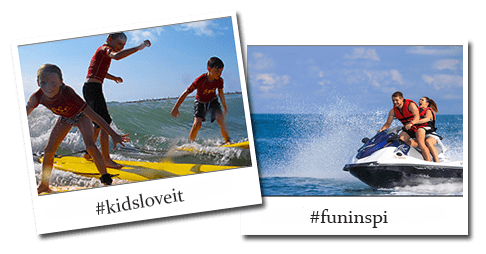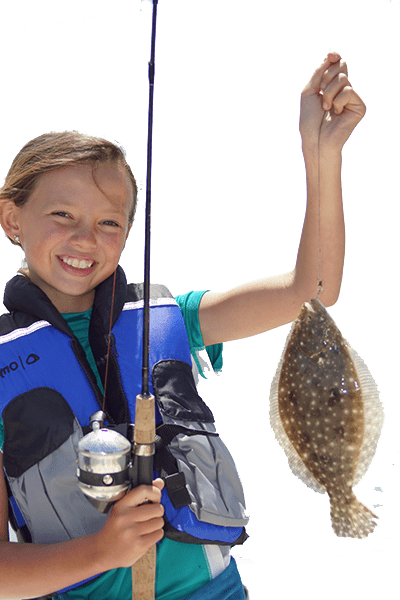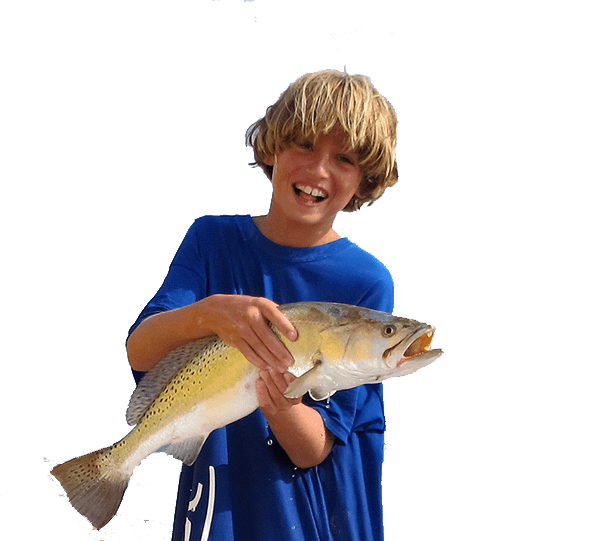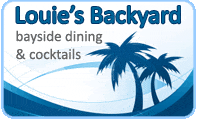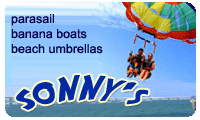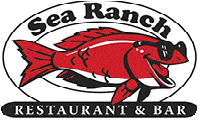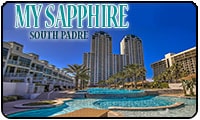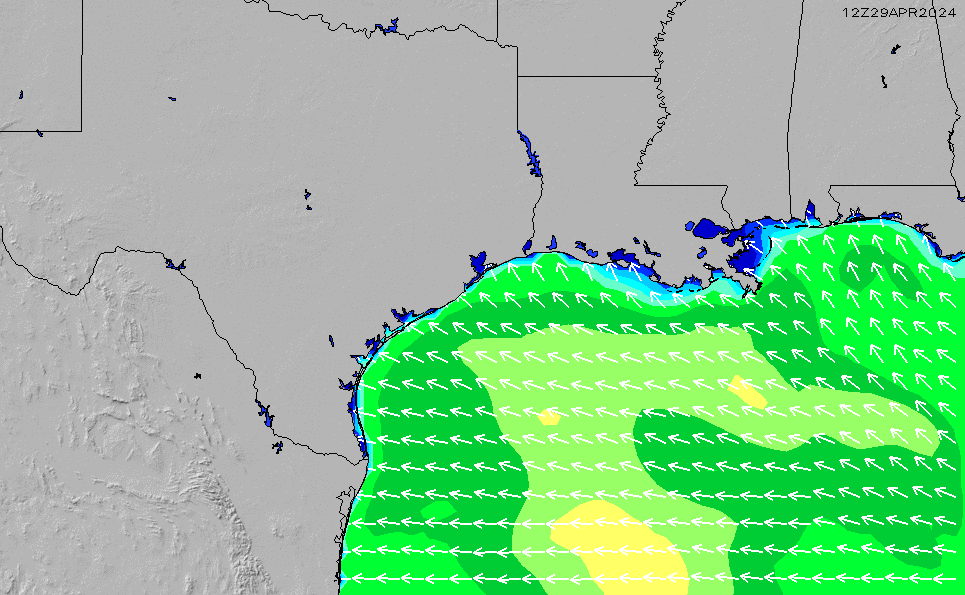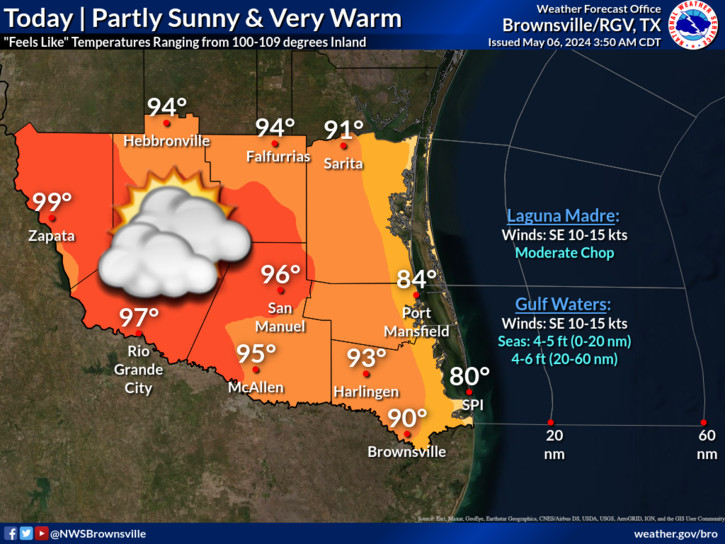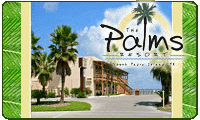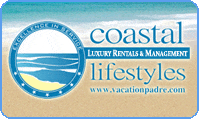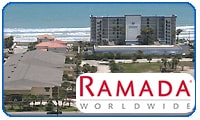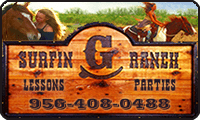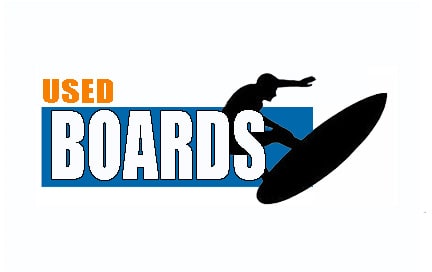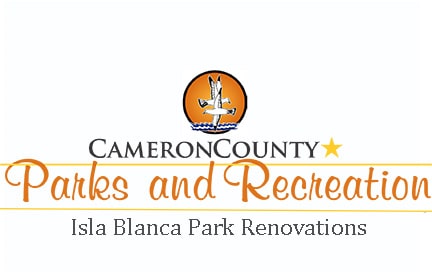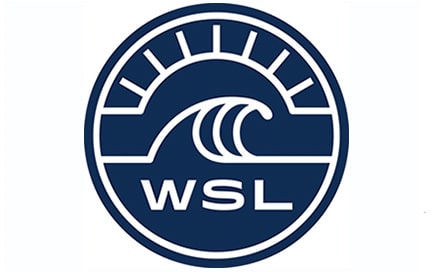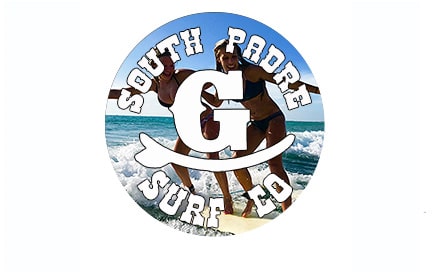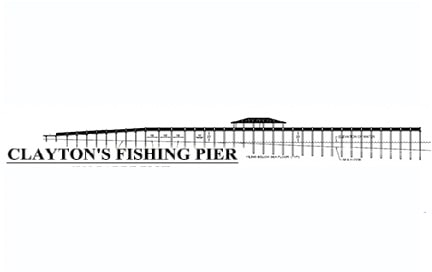Surfing in South Padre Island, Texas
Well known as the best surf in Texas, South Padre Island has the biggest, most powerful, most consistent and best shaped waves, with the warmest cleanest water, than anywhere else on the Texas Gulf Coast. Fun surf year-round, with clear water and lots of empty waves make South Padre the #1 surfing destination for Texas surfers. If you want to catch the best and biggest surf in Texas here at South Padre Island, Spadre.com live surf cams and updated surf report gives you the up-to-the-minute report on conditions, and surf outlook for 3-5+ days out. (*** It's a mathematical fact that South Padre Island has MORE surf than Hawaii, and probably anywhere in the world! Here's why... our waves are short interval swells with an average 6-8 second period between waves, compared with Pacific Ocean waves that average 15 second interval or more. Sets of waves come very rapidly as well, as frequent as every 1-2 minutes, compared to 5-15 minutes or more in ocean swells which travel much further therefore are spaced much further apart. So, in a day, we may see several thousand or more set waves breaking versus only a few hundred in Mexico, California or Hawaii... not to mention the fact that there are less surfers here than probably anywhere in the USA! Its the best thing about surfing in Texas, more waves than you could ever catch! Exactly the opposite of everywhere else where crowds have become a major problem) Surfing Spots on South Padre Island Listed below are the 10 most popular breaks, with pictures and information on how and when they break best. Wind and tides have major effects on the surf conditions, check Spadre.com's live surf cam, report and forecast before you come so you'll know just when and where to surf, as conditions change frequently. Getting here when its good is up to you! 1) Isla Blanca Beach Park - The Jetties on the south end of the Island is home to the premiere surfing wave of the Texas Gulf Coast, with its clear clean emerald-turquoise water and long peeling waves. Deep water just offshore, and east facing beach exposed to any nearly any swell direction makes it by far the most consistent wave on the coast. The first parking lot as you drive up to the beach is the gathering place of Texas surfers. The "inside" sandbar is less than a hundred yards from shore with fast lined up waves, it can hold surf up to 8-10'. The outside sandbar starts to break when waves reach 6-8' and it is not uncommon to see 12-15' surf or bigger in tropical storms or hurricanes. Paddle outs can be rather difficult on bigger days. Best on E or SE swells, wind from the SE to S is common and good, SW to W wind is offshore and perfect. Take a right on Park Road 100 immediately after crossing the Queen Isabella Memorial Causeway, entry to Isla Blanca Beach Park is $10/vehicle/day or annual passes are available for $100. Map of Isla Blanca Beach Park 2) Second Lot - Just a few hundred yards further north from the jetty, the second parking lot (Second Lot) is best on Southerly swells that miss the jetty area. A fast-breaking wave, can get nice and hollow with offshore winds. Subject to longshore currents. 3) Dolphin Cove - A legendary big wave spot located inside the channel on the Padre side, a clean powerful left that only appears on the biggest of tropical storm or hurricane swells, very rare. Access is very dangerous, only by jumping off the jetty into the channel. Also, the jetties are heavily infested with urchins, climbing onto the rocks can be a very painful experience! Be aware of extremely strong currents during high surf. 4) Barracuda Cove - Also located inside the channel on the Boca Chica side, this long peeling right has a powerful shorebreak as well. Breaks more consistently now on big E to NE swells, the sandbar is becoming better formed due to recent tropical storms. Seas must be 12' or more, and the tide must be outgoing for it to turn on. You can paddle across the channel to surf it but the currents in the channel can be extreme. 5) Boca Chica - Across the channel, the south jetty at Boca Chica Beach is mainly a winter surf spot, also handles tropical storm and hurricane surf very well. A 1 hour, 45 mile drive through Brownsville and back up the beach. Go back over the bridge, turn left at Walmart on Hwy 48 then left on 511 at Port of Brownsville, then left on Hwy 4 to the beach, turn left and drive on the sand for 5 miles. It is much faster to paddle across the channel but the swift currents in the channel can take you for a ride! The inside is best on medium size swells and incoming tide, outside can get very big with an easy paddle out next to the jetty. Long, long lined up lefts and often clean bowling rights near the jetty. Best on N, NE or E swells. NW to N winds are best. 6) Town Beachbreaks - There are many free public beach access points along the stretch of high-rise hotels and condos on South Padre Island, leading to miles of unsurfed powerful beachbreak sandbars. Drift sessions are the call as longshore currents can be strong. Offshore winds can turn these town beachbreaks into gaping board-snapping tubes with only you and your friends out. Definitely worth a check on most swells. Good on most swell directions, but offshore winds from the NW, W or SW are best. The beachbreak in front of Wanna Wanna's is currently the best. Port Mansfield Jetties: A completely undeveloped secluded beach nearly 30 miles north, (although the pristine beauty is trashed by disrespectful local fishermen. Take Fish - Leave Trash is their motto.) with two jetties and a small boat channel dividing South Padre Island from the Padre Island National Seashore, the channel cuts across the Laguna Madre to the town of Port Mansfield. There are no roads, no facilities, it can only be reached by 4-wheel drive on the sand or by boat up the Laguna Madre or from the village of Port Mansfield. There is safe anchorage just inside the channel. One of the last places in the U.S. where you can find undeveloped beach, huge sand dunes and quality surf with noone for miles, a fine destination for a surfari. Bring a shovel, water, food and anything else you might need. Lots of sharks. 7) The Dunes - Driving north up the beach towards Port Mansfield jetties you will pass some of the largest sand dunes on the coast, from the last beach access road 6 northward. Some of these dunes are very close to the water's edge and have an obvious effect on the beach contour and sandbars. This area can be the biggest surf around on small days, and some of the hollowest tubes, keep a close eye on the surf as you are on the way, if it looks good... its always better than it looks! 8) North Jetty - Solitude and perfection. One of Texas' great surfing secrets, the north jetty is an excellent surf spot from small to well overhead. Long lined up rights with an easy paddle out next to the jetty. Best on E or SE swells with SE, S or SW wind. N or NE wind makes for choppy conditions. More recent pictures: 1 2 9) South Jetty - A much shorter jetty than the north side due to accretion of the beach, a fun hollow right and long left peels of the end of the jetty with a short easy paddle out next to the rocks. Best on small to medium size winter days with N, NE or E swells and N to NW wind. On big north swells it will be closed out, go to Boca Chica. Picture 10) Mansfield Channel - Rarely surfed due to strong tidal flow (riptides) Recent tropical storms have caused large amounts of sand to shift into the channel, and it now breaks very consistently. Usually bigger than either side of the jetty. Paddle in and out from the small sand cove just inside the jetty, or jump off the jetty. Check the current, it is usually moving quickly either in or out with the tide, best to catch it on a standing tide. Best on E to NE swells with N to NW wind. Sharks. Climate and Seasons The surf in Texas varies in form and consistency with the seasons: Summer - Summer is the least consistent time of year for surf, but there are fun playful waves nearly every day that are great for beginners. June is typically fairly consistent month for surf with strong, hot S to SE winds. Air temps on the Island are usually in the 90's, with water temps very comfortable near 80 or more. The surf tends to be small from July through August, except for the occasional tropical storm or hurricane which can create really incredible surf. The water temperatures at South Padre stay a few degrees cooler than the upper coast due to the deep water just offshore, but the sun and sand can get blistering hot. Fall - Fall can be the best season of the year for consistent, warm surf. September and October are the peak of hurricane season, and early cool fronts begin making their way down by October. A springsuit or vest may be needed after a cool front, fullsuits usually aren't needed until December. Winter - South Padre has fairly mild winters, with a few arctic blasts each winter. A full collection of wetsuits may be needed to take advantage of the powerful winter surf, but many days are also warm and sunny. Winter swells are often much bigger than the rest of the year. Spring - As the days warm, strong south winds return with consistent spring swells. Coastal fog is common due to the cool water and warm air. South Padre Island used to be a major spring break destination with massive crowds and hotels completely booked during most of March, but that is a thing of the past. Spring break has almost completely disappeared compared to what it used to be. Monthly Water Temperature Average at South Padre Island Jan - 58 Feb - 60 Mar - 64 Apr - 70 May - 77 Jun - 79 Jul - 79 Aug - 80 Sep - 83 Oct - 78 Nov - 71 Dec - 64 Local water temps can fluctuate from these averages by 3-5 degrees or more. Tides and Buoys Buoys - One of the best surf indicators are the many National Data Buoy Center buoys offshore in the Gulf of Mexico that are accessible on the internet and by weather-radio. The hourly data obtained from these buoys is amazing, windswell and groundswell are separated into charts with wave interval, direction, sea surface temps, barometric pressure and wind speed and direction. Learn to "read" the buoy data charts and you'll be on top of every swell. Tides - The tide has a fairly major effect on wave quality as well. A moving tide, either incoming or outgoing is usually best. The tide range, or distance between high and low, is usually only 1-2 feet on the Texas coast. Always check the tides when you are planning your day at the beach. Today's Tide Chart Surfboards and Accessories Choosing the Right Surfboard Having the right board for the conditions and for your ability will make the difference in whether you have an enjoyable session or don't catch any waves at all. Start out on a longboard thick enough to float you so that you can paddle out comfortably. Remember, if you can't catch waves you aren't having any fun, so consider a larger board regardless of what looks cool. As your skills progress you can move down to shorter boards, but most days in Texas are better suited for fuller template shapes, meaning thicker longer and wider. Softboards are the best choice for kids, they are safe and easy to learn on. If you have any questions or need assistance in picking the right surfboard for you, or interested in surfing lessons while on South Padre Island feel free to contact us. Accessories Along with your surfboard you'll need a few other essentials: Leash - get one the same length as your board, but don't substitute your leash for swimming ability. Extra fins - try to get a board with removable fins, you can drastically alter the performance of your board to fit the surf conditions or your surfing style by either moving or changing fins. Board Bag - Keep your board out of the sun when you are not riding it by using either or board sock or padded travel bag. Racks - hard racks are more expensive than soft racks but much stronger and dependable, make sure they are securely tightened. Wax - before every session you'll need to wax your board, or use a wax comb to roughen your existing coat. There are several different formulas of wax to be used in different water temperatures, make sure you have the right one. Sunscreen - Summer or winter you should always use waterproof total sunblock. Skin cancer kills. Wetsuits - If you want to take advantage of the best surf, which often is in the winter, you'll need to invest in a wetsuit. A lycra rashguard is good for keeping the sun off your shoulders and back. A springsuit for fall and spring days, and a fullsuit with booties are necessary in the mid-winter. A neoprene hood is a big help in keeping warm, since most heat is lost through your head from wind chill. Ding Repair- If you get a ding in your board you should fix it before surfing or water will enter the board. There are new simple to use sun-cure repair resins and puttys that cure in just a few minutes, you can even do a repair on the beach!. Simply dry the board, sand the ding area lightly, apply the resin (in the shade) and set in the sun to cure. Sand with 80 grit (rough), then 220 grit (fine) sandpaper, and paddle back out! OCEAN SAFETY INFORMATION For Surfers at South Padre Island Surfers need to be aware of the surf conditions and related currents. ALWAYS take a few minutes before you paddle out to study the waves, noting where the best waves are breaking, and the strength and direction of the rip and longshore currents. South Padre Island recently started a new Beach Patrol program in 2009. The beach patrol is trained to respond to swimmers in distress with jet-skis, rescue board or rescue swimers. Many rescues are performed by local surfers. The most common surfing injuries are from surfers trying to jump off the jetty, or from being struck by your own surfboard. Also on big surf days, beware of the strong rip current next to the jetty. Before you jump into the waves, take a few minutes to read this important water safety information and discuss it with your family and friends. The surf you've come here to enjoy is irresistibly beautiful and enjoyable, yet powerful and dangerous and must be respected. Check with a local surfer or a lifeguard as well. Surfing Safety & Etiquette: 1) THREE SECOND RULE - When you fall off your board, your first instinct is to immediately pop up for a breath of air... if you do, your board is probably going to come down and smack you on your head, so STAY UNDER WATER FOR 3 SECONDS, AND COME UP WITH YOUR HANDS PROTECTING YOUR HEAD!! Its not a matter of if your surfboard is going to hit you, its a matter of when and how hard, so remember the 3-second rule, it can save your life. 2) JETTY RULE - Never jump off the jetty. A slight miscalculation on your jump and you and your board are both gonna have a really bad day, but more likely you will get washed off the jetty by a wave (see pictures below). If you can't paddle out you don't belong out, you gotta pay your dues. There is also a dangerous rip current next to the jetty during high surf that will sweep you out to sea. "I had a pretty bad surfing accident, broke some bones in my back / neck. After seeing several surgeons i was told never to surf again , too big of a risk of becoming paralyzed if I had anymore accidents. I was slammed into the jetties and broke some bones on the leftside of the mid section of back , as well I suffered compression fractures to the C-7 , C-6 vertibraes to right side of my neck." Check out these pictures of surfers getting washed off the jetty. 1 2 3 4 5 6 7 3) DON'T DROP IN! - One person per wave, look both ways before you take off. 4) KNOW BEFORE YOU GO - ALWAYS take a few minutes to study the waves before you paddle out. If you are new to the break, or anywhere you may travel to surf, ask a local surfer or lifeguard about the conditions BEFORE you paddle out, you may save yourself from an embarrassing or dangerous situation. Avoid the MULLET SYNDROME, don't paddle out straight into a pack of surfers, if you take a few minutes to study the waves you'll see that most often there are better waves breaking nearby with noone on it! 5) SWIMMING RULE - Don't paddle out further than you can swim back in. Eventually your leash will break or come off. If you really want to improve your surfing and paddling, spend some time in a pool doing laps on flat days, or in the ocean. 6) SURFBOARD CONTROL - You are responsible if your surfboard hits another board or surfer, always maintain control. 7) SUP's - SUP's should stay clear of surfers in the surfing area. Stand up paddleboards are dangerous in breaking waves, and are best for calm water. 8) SHUT UP AND SURF - Focus entirely on getting into the rhythm of the swell. Save the yapping for the chatrooms, parking lot or bar, it instantly puts you out of ryhthym with the waves. Hooting for good rides and friendly conversation is great but even then you'll find yourself out of position and the best waves either breaking on your head or watching everyone else riding them. 9) HURRICANE SURF - The surf at South Padre Island can get very big during hurricanes reaching heights of 20' or more. Its always much bigger than it looks, and your board and your leash is probably not right for big waves. Most importantly though, few if any surfers have the swimming ability required to make it to the beach in 20' waves from 3/4 mile offshore. Remember too that if you need rescued you are likely to be headlines in the morning paper, you are pretty much on your own in heavy surf. If you break your leash and are forced to swim in, you will likely panic and swim for the jetty where your only hope of surviving means a thorough thrashing on the rocks. Rip currents are extreme during storm swells, even the best swimmers are at risk. Jetty jumping is for kooks, if you can't paddle out AND swim back in, you don't belong out. 10) RIP CURRENTS - You better know where they are before you ever enter ANY OCEAN ANYWHERE. Ask a knowledgeable local. Use the rip to your advantage. Remember at South Padre, and anywhere there is a jetty, pier or reef there will be rip currents, actually anywhere you find waves there will be rip currents. The rip by the jetty here is a powerful river flowing out to sea, the worst place to be if you are in trouble. "Swim to the side to stay alive." DANGERS & HAZARDS If the rocks are wet from waves, DO NOT walk any further! Your Surfboard - The most dangerous thing about surfing is your own surfboard. You can be seriously injured or killed from being struck by your board. Practice the "3-second rule", it may save your life. Jetties - Located at the southern tip of the island in Isla Blanca Park, the jetties are not designed for public access, although it is allowed. Never jump off the jetty. Many surfers and their boards are swept off the rocks and injured while attempting to jump off the jetty into the surf. Being washed up and down barnacle encrusted - urchin infested granite boulders is humiliating at best. If you can't paddle out, you shouldn't be out, you will likely find yourself in a situation that you can't handle, or swept out to sea in the strong rip next to the jetty. Rip Currents - The rip current you need to be concerned about as a surfer is located next to the jetty. This rip current is the strongest and most dangerous on the entire Texas coast, and on big days it can suck you out to the end of the jetty into the "pit" where the biggest waves will break, and likely wash you back onto the rocks. If you get caught in the rip, simply remain calm and swim or paddle to the side away from the jetty and the surf will push you back towards shore. Do not hesitate to call for assistance. Longshore Currents are simply the current that moves along the beach, usually in the direction that the wind is blowing. I there is a north wind, the longshore current will sweep you towards the jetty where it will become a rip current sucking out to sea. BEACH and OCEAN SAFETY INFORMATION For Visitors to South Padre Island Before you jump into the waves, take a few minutes to read this important water safety information and discuss it with your family and friends. Beachgoers need to be aware of the surf conditions and related currents. The waves you've come here to enjoy are irresistibly beautiful and enjoyable, yet powerful and dangerous and must be respected, even on the days when the surf is relatively calm. There is now a Beach Patrol on SPI, but many rescues are performed by local surfers, and were recognized in 2003 by Cameron County for the many rescues performed with a proclamation of "Surf's Up Week". Taking simple precautions like wearing a lifejacket can easily avert a tragedy. Water Safety Rules 1. LEARN TO SWIM - WEAR A LIFEJACKET IF YOU DON’T SWIM WELL 2. BE AWARE OF RIP CURRENTS 3. OBEY WARNING SIGNS AND FLAGS 4. HAVE AN ADULT CHECK CONDITIONS FIRST 5. DON'T SWIM ALONE 6. STAY IN WAIST DEEP WATER DURING HIGH SURF 7. NEVER LEAVE CHILDREN UNATTENDED 8. DO NOT SWIM NEAR THE JETTY 9. DON'T USE INFLATABLES IN THE SURF 10. DON'T OVERESTIMATE YOUR SWIMMING ABILITY * ALWAYS USE A FLOTATION DEVICE IF ASSISTING IN A RESCUE Rip Currents Rip currents are common on all South Padre Island Beaches. Rip currents occur around the world at "surf" beaches, including both the Atlantic and Pacific coasts, the Great Lakes, and the Gulf of Mexico including South Padre Island. Rip currents are also the #1 cause of drownings. If you are caught in one, how you respond could make the difference between life and death. Unlike undertows, rip currents are shallow water processes that do not pull a person under. They form when water, piled against the shore, begins to return to deeper water. Typically, strong wind and swell waves push water over a sandbar allowing excess water to collect. Eventually, the excess water starts to return seaward through low areas in the sandbar, "ripping" an opening. Rip currents can be readily seen from the shore. You can spot a rip current by looking for objects or foam moving steadily seaward. Wave heights are also lower and choppier in rip currents. Since rip currents are NOT undertows, you can be pulled away from the shore but not pulled under the water. The most common mistake drowning victims make is to panic and try to swim directly toward the shore. Even the best Olympic swimmers are not able to successfully swim toward shore in the strongest rip currents. If caught in a rip current, simply remain calm and swim or paddle to the side and the surf will push you back towards shore. Do not hesitate to call for assistance. Rip Currents are common, be aware! Rip Current Index Rip Current Outlooks use the following, three-tiered set of qualifiers: Low Risk - Wave Heights 0-2' and/or Wind Speed less than 10 kts. Wind and/or wave conditions are not expected to support the development of rip currents; however, rip currents can sometimes occur, especially in the vicinity of groins, jetties, and piers. Moderate Risk - Wave Heights 3-5' and/or Wind Speed 10-20 kts. Wind and/or wave conditions support stronger or more frequent rip currents. Only experienced surf swimmers should enter the water. Use a lifejacket, bodyboard or flotation device. High Risk - Wave Heights 6'+ and/or Wind Speed greater than 20kts. Wind and/or wave conditions support dangerous rip currents. Rip currents are life-threatening to anyone entering the surf. Stay in waist deep water or less! -Rip currents are NOT undertows, you can be pulled away from the shore but not pulled under the water. -If caught in a rip current, simply remain calm and swim or paddle to the side and the surf will push you back towards shore. Helpful Links: National Weather Service Rip Current Information Website NWS Brownsville Surf Zone Forecast and Daily Rip Current Index Spadre.com Daily Beach and Surf Report United States Lifesaving Association FLAG ADVISORY SYSTEM Surf Conditions FLAG ADVISORY SYSTEM sistema de aviso con bandera .... -heavy surf -dangerous currents -oleaje fuerte -corrientes Peligrosas .... -calm to moderate water -does not mean safe water -agua calmada a moderada -no asuma agua segura .... -presence of venemous marine life -presencia de vida marina venenosa Absence of flag does not assure safe water La ausencia de banderas no asume condiciones de agua segura Dial 911 for emergency Marque el 911 para urgencias As you enter any County beaches you will notice the Flag Advisory signs. There is no flag system on City beaches Holes, Sandbars and Dropoffs The waves may SEEM calm at times and the ocean look safe, but the bottom is irregular and uneven with quick dropoffs and deep holes. These conditions change daily. When you step off the beach, in just a few steps you can be in 5-7' of water, this is very dangerous for children and non-swimmers. After this first trough, the first sandbar is around 50 feet out and can be a shallow as 1-2' on a low tide or much deeper on a high tide. There are many deep holes, even in shallow water. You may be wading in 2' of water and take one step and be in 6' of water. This is very common in the first trough close to shore. Longshore Currents Longshore Currents are simply the current that moves along the beach, usually in the direction that the wind is blowing or the waves are breaking. You will notice the longshore current as you enter the water, causing you to drift along the beach. These currents can run as fast as 3mph. Not a hazard for swimmers, unless there is a north wind, the longshore current will sweep you towards the jetty where it will become a rip current sucking out to sea. Tides The tide plays an important factor in water depths in the surf. The tide range, or difference between high and low tide varies between 1 to 3 feet. High tide will cause more powerful waves to break closer to shore and deeper water near shore. A low or outgoing tide can greatly increase the rip current risk. Click here for today's tide chart. The Jetties If the rocks are wet from waves, DO NOT walk any further! Jetties - Located at the southern tip of the island in Isla Blanca Park, the jetties are not designed for public access, although it is allowed. Never swim near the jetty. Many people have been swept off the rocks and injured or swept out to sea in the strong rip next to the jetty while attempting to walk out the jetty during high surf. The granite boulders are barnacle encrusted and urchin infested. Always bring some type of flotation device to be used for rescue in case someone falls into the surf. There is a strong rip current located next to the jetty. This rip current is the strongest and most dangerous on the entire Texas coast, and on big days it can suck you out to the end of the jetty into the "pit" where the biggest waves will break, and likely wash you back onto the rocks. If you get caught in the rip, simply remain calm and swim or paddle to the side away from the jetty and the surf will push you back towards shore. Do not hesitate to call for assistance. Surf Rescue If you notice a swimmer in distress in the surf, first have someone call 911. Then, before you ever attempt a rescue, be sure to take some type of floating object such as a bodyboard or inflatable float or you are very likely to also be a drowning victim. As you approach the victim, present the float to the victim, keeping the float BETWEEN you and the victim, and continually reassure the victim and make your way towards shore. If you happen to be caught in a rip current with the victim, remember to paddle across the current, then back towards the beach. Undertow Undertow is a concern mostly for weak swimmers or the unfortunate non-swimmer. An undertow occurs when a wave is about to break on a shallow sandbar where a swimmer might be standing. The water will suck underneath the wave as it breaks. This "undertow" can sweep a weak swimmer off of their feet and into deeper water, and he may panic as the wave crashes over his head. The undertow disperses almost immediately until the next wave approaches, then the cycle starts again. An undertow can drown a person just feet from safety. Stingray Stingray are occasionally found in shallow surf and have a sharp barb at the base of their tail that leaves a small puncture wound, and injects a very painful venom. The pain will travel up the legs to the groin and armpits. APPLY HEAT IMMEDIATELY directly to the wound!! Hot water, hot shower, hot tub, hot pack... heat is the ONLY antivenom (never ice). It is advisable to seek follow-up medical attention. Infection rate is 100% Jellyfish Whenever a blue advisory flag is flying, stinging jellyfish are likely in the surf. Reactions vary in individuals. Rinse with salt water, in most cases the sting may be treated with vinegar and unseasoned meat tenderizer mixed in a paste, applied directly to the sting, lidocaine spray is also effective. NO GLASS BOTTLES ARE ALLOWED ON THE BEACH. DON'T LITTER. PICK UP SOME TRASH THAT ISN'T YOURS. Local Emergency Numbers CALL 911 first for any emergency. South Padre Island EMS (956) 761-5454 Cameron County Park System (956) 761-5494 U.S. Coast Guard Station South Padre Island (956) 761-2668 Cameron County Parks Police (956) 761-5283 (This Water Safety Information was written by local Ocean Safety expert Gene Gore with the purpose of educating visitors to South Padre Island in the hope of preventing drownings. For additional questions or comments feel free to email Gene. ) Member U.S. Lifesaving Association Galveston Beach Patrol Wind and Wave Formation As your experience in the surf grows, so will your knowledge of the wind, the source of the waves we ride. You may be miles from the coast one day, you feel a stiff breeze and look up at a flag or tree, a cloud... a sign. You don't need the internet to tell you, you know that's a south wind, blowing for two days now... trees bending and whistling, flags whipping, low clouds whisking by... it means one thing, a new south swell is building! The Texas coast is entirely unique in the way that the local weather affects the waves. Our coast is mostly dependent on wind-driven surf rather than ocean swell. While most coastal weather patterns elsewhere only affect the general texture of the ocean's surface they will have little impact on swell generated thousands of miles away (groundswell). The Gulf on the other hand, being roughly less than 1000 miles wide is almost entirely affected by passing weather systems. Another surprising fact about Texas surf: Texas (especially South Padre Island) has more surf than anywhere else on Earth! It is a mathematical fact, you'll discover when you are paddling out... you sure get pounded by a LOT of waves on the way out! Our waves are short interval, mostly 6-8 seconds between waves versus 12 to 15 to 20 second intervals on other coasts. Our waves are nearly constant as well, while say in Hawaii you can wait 20 minutes for a set. So, in a 1 hour period at South Padre there may be over 600 waves breaking, while in Hawaii you may only see a few dozen. And since there will be dozens of surfers in Hawaii competing for those few waves, and sometimes only a few surfers out in Texas picking the best waves, if you want to catch more waves then surf Texas! Wind generates waves, and when there is a storm system in or near the Gulf the winds begin to blow and the wave-making process begins, forming windswell. In Texas, on stormy windy days when no normal person would even think of going to the beach, this is when you'll find the avid Texas surfer waxing up. This is also what makes Texas surfers a unique crew; stoked, appreciative and dedicated to riding whatever Old Man Gulf will hand out, no matter what the conditions. Waves are created by the wind, wind is caused by differing atmospheric pressures between high and low pressure systems. Onshore winds (SE, E or NE) are winds that blow towards shore. Onshores cause the waves to build but make for choppy conditions. Offshore winds (NW, W or SW) are winds that blow from land towards the surf. Offshores cause the waves to be perfect and hollow, but also causes Texas surf to go flat. Sideshore winds (N or S) are winds that blow directly up or down the beach, and can cause extreme longshore currents. If the wind is blowing from the south, you want to surf on the north side of the jetty, the conditions will be much better. If the wind is from the north, then surf the south side. The wind is labeled by the direction from which it originates: a south wind comes from the south. High pressure usually means nice weather but the surf is likely to be small or flat. The wind rotates around a high in a clockwise rotation. Low pressure systems are the source of most swells. The more intense the low is, the stronger the winds become, building the surf as they intensify. Low pressure systems have a counter-clockwise rotation. The wind is measured by an anemometer, air pressure is measured by a barometer. Barometric pressure is a very important measurement used to predict weather and surf. On a weather map, you can see little white lines in swirling patterns called isobars. These are lines of equal air pressure. The more isobars and the closer they are together, the stronger the wind will be. The wind roughly follows the direction of the isobars. In time, one quick glance at a weather map and you'll know just how big the surf will be and where! The Three Keys There are three factors that determine how large and how well-formed the waves will be, and how long they will last: Fetch - The distance or area over which a sustained wind blows over the water is called the fetch. Study the buoys across the Gulf to see the effect of a short or long fetch. Duration - How long the wind blows over the water in a sustained direction. The direction of the prevailing wind flow determines the dominant direction of the swell, and each surf spot breaks differently on differing swell directions. The longer the duration, the larger and better-formed the surf becomes. Velocity - Of course, the speed and strength of the wind will determine the size of the swell, but this is dependent on the fetch and duaration. Learn to understand and "read" the wind, it is the key to predicting surf on the Texas Gulf Coast. Tropical Storms and Hurricanes Texas surfers live for hurricanes! While the approach of a hurricane signals evacuation, boarding up windows and panic shopping for most people, for the Texas surfer it means one thing... Big Surf! There are few spots (and few surfers) on the coast that can handle the really big waves that major hurricanes produce, the wind is almost always a major factor in the surf conditions. Remember that hurricane surf can be very dangerous, with heavy currents and huge waves washing up the beach pulling debris out into the surf. Wear a strong leash, and realize that if you do lose your board you may get sucked out beyond the 1/2 mile long jetty by our infamous rip currents here at South Padre Island next to the jetty. Hurricane season runs from June 1st to November 30th, with the most active period being mid-September through October. Hurricanes can produce massive surf of 20 feet or more, challenging the best surfers to not only ride them, but to even make it out! The immense size of hurricanes compared to the Gulf of Mexico usually creates a common dilemma for Texas surfers... too much wind. Most often winds will be N to NE causing poor conditions, but when storms are in the eastern Gulf we are not hardly affected by the winds, only receiving clean groundswell. Storms that move north from the southern Gulf, as they pass by the winds will become offshore, sucking into the storm, causing classic conditions. Smaller tropical storms can often produce the better waves, with less wind and they tend to hang around in the Gulf a bit longer. Coastal Environment South Padre Island is fortunate to have the most beautiful, well-kept beaches on the coast. A strong sand renourishment program is keeping check with erosion, there are no refineries to pollute the air, no big city nearby to contribute to runoff pollution, strict dune and beach protection policies, and regular trash pickup. However, litter is always a problem at any beach, take a minute and pick up any trash you see. It may not be yours, but its your beach. South Padre Surf Co. is the State Adopt-a-Beach sponsor for Isla Blanca Beach Park and the South Padre Island jetties. Beach cleanups are held 3 times each year, contact us if you would like to get involved. We are also on the General Land Office Coastal Texas 2020 Advisory Committee, giving a voice to area surfers, fishermen and beachgoers in the coastal management processes, please contact us if you have any comments. We are also long time supporters of the Surfrider Foundation, the Texas Coast's leading advocate for public beaches. Contact Surfider to learn more. Learn to Surf! If you or someone you know would like to learn to surf, we'll make your first experience a great one at South Padre Island! South Padre Surf Company offers professional Surfing Lessons year-round and fun day Surf Camps.

